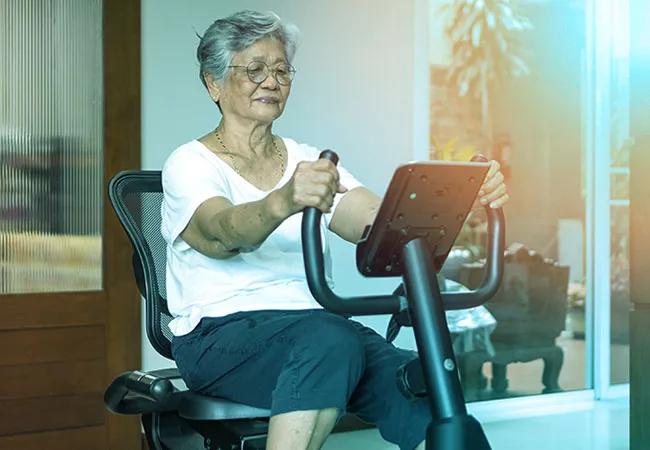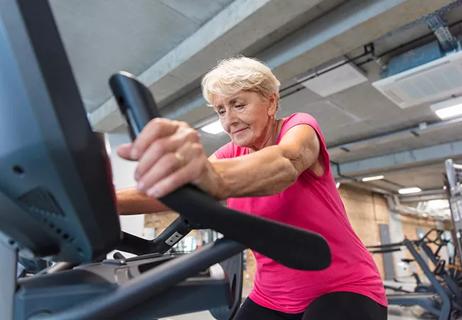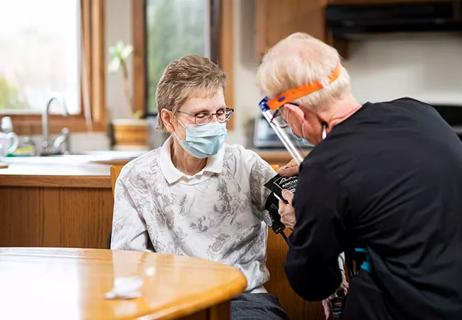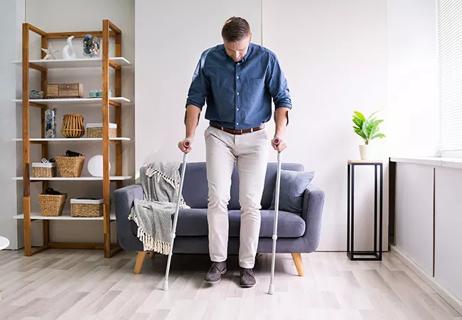Advertisement
Gait becomes more normalized along with gains in speed

An eight-week program of aerobic stationary cycling for patients with mild to moderate Parkinson’s disease (PD) improves not only comfortable walking velocity but also gait biomechanics, contributing to better coordination and balance. The findings, from a Cleveland Clinic-led investigative team, suggest the intervention leads to a more normal gait and thereby may reduce the risk of falling.
Advertisement
Cleveland Clinic is a non-profit academic medical center. Advertising on our site helps support our mission. We do not endorse non-Cleveland Clinic products or services. Policy
The investigators are the first to systematically evaluate changes in the biomechanics of gait as a result of a cycling program for patients with PD. They recently described their results in two publications: Gait & Posture (2022;98:313-315) and Parkinsonism and Related Disorders (2022;104:78-80).
“Our findings support the use of aerobic cycling to address gait dysfunction, a cardinal symptom of Parkinson’s disease that is difficult to treat,” says Susan Linder, DPT, PhD, Director of Clinical Research in Cleveland Clinic’s Department of Physical Medicine and Rehabilitation and lead author of both reports.
Faster gait velocity is associated with reduced fall risk, greater independence in daily activities and lower mortality. For these reasons, gait speed has become a rehabilitation focus for patients with PD.
Numerous studies have found that cycling improves walking speed. However, it has been unclear whether cycling-derived speed gains are accompanied by better locomotor control (i.e., increased step length and smoother cadence) or if cycling simply speeds up the typical stooped, shuffling gait that is characteristic of PD. If the latter is the case, the risk of falls might actually increase.
Advertisement
Both new study reports by Dr. Linder’s team are from a secondary analysis of the randomized Cyclical Lower-Extremity Exercise for Parkinson’s (CYCLE) trial. In that study, patients with PD underwent three weekly 50-minute cycling interventions for eight weeks, working at 60% to 80% of heart rate reserve. A control group received no exercise intervention.
Advanced gait data were acquired from 14 patients in the cycling group and 14 patients in the control group using the Computer Assisted Rehabilitation Environment (CAREN) system at Cleveland Clinic. This 10-camera, 3D motion capture platform allows assessment of gait kinematics, kinetics and spatiotemporal variables, important for gait balance and coordination. Data were compared at baseline and during the week following the final exercise session while patients were off PD medications.
The study described in Gait & Posture compared the exercise intervention participants to controls who underwent no exercise. The exercise group made significant gains in velocity and gait biomechanics, while the control group declined in all measured gait parameters during the same period.
The Parkinsonism and Related Disorders report looked only at the exercise cohort, comparing patients with a predefined level of minimal clinically significant improvement of gait velocity (0.1 m/sec) (n = 9) to patients who did not meet that threshold (n = 5). In addition to assessment with the CAREN system, motor symptoms were quantified clinically with the Motor Section of the Movement Disorders Society Unified Parkinson’s Disease Rating Scale (MDS-UPDRS-III), also while patients were off PD medications. A possibly relevant variable detected between the two groups was cycling cadence, which was 10% faster among the subjects who met the threshold of clinically significant gait velocity improvement. Notably, the group that did not meet the threshold had worse measures at baseline than the group that did. However, Dr. Linder emphasizes that for the entire intervention cohort, gait velocity and MDS-UPDRS-III scores improved from baseline to the end of treatment.
Advertisement
Dr. Linder notes the following key takeaways from these investigations:
A follow-up study to CYCLE with more than 200 participants is now ongoing, led by Jay Alberts, PhD, which is studying effects of an exercise program in patients with PD using a home stationary bike over the course of a year (NCT04000360; see previous Consult QD post).
Dr. Linder is also examining the effects of aerobic stationary cycling on patients with stroke and those with multiple sclerosis.
“We don’t believe there is something unique to cycling that may confer benefits to different conditions,” says Dr. Linder. “Maintaining a high level of physical activity seems to be key, and that can safely be done with a stationary bike by people with a variety of disabilities.”
She recommends more widespread adoption of stationary cycling outside of research and clinical settings, noting that programs for patients with PD are increasingly offered in gyms and online for home participation.
Advertisement
Advertisement

First-of-kind study is testing feasibility of real-world practice model

Research to test clinical efficacy and cost-effectiveness versus standard-of-care rehab

Pilot study finds both forced- and voluntary-rate cycling effective for symptom management

Training in stretches, emphasis on biomechanics help ease work-related pain, survey finds

High-intensity cycling program leads to improved walking capacity and upper extremity function

Novel post-acute care model aims to improve functional outcomes with reduced costs

More evidence needed on pharmacologic therapy alone and combined with gait training

Innovative postacute care model reduces costs, improves functional outcomes